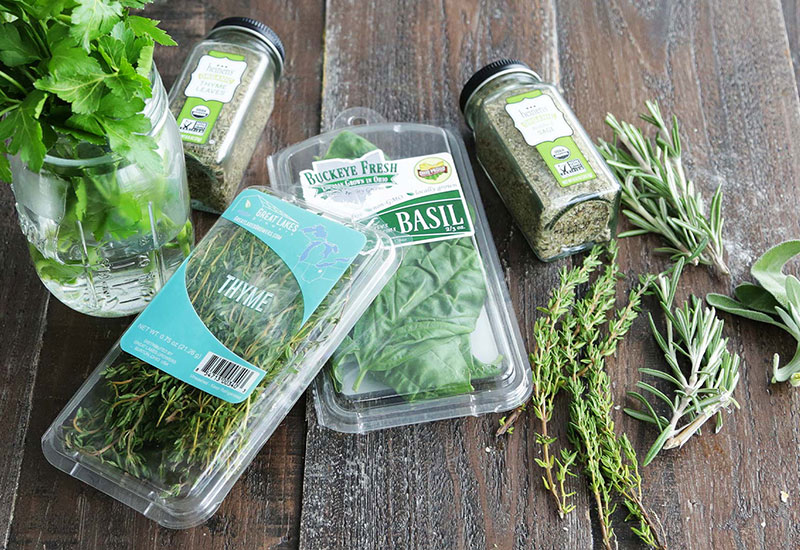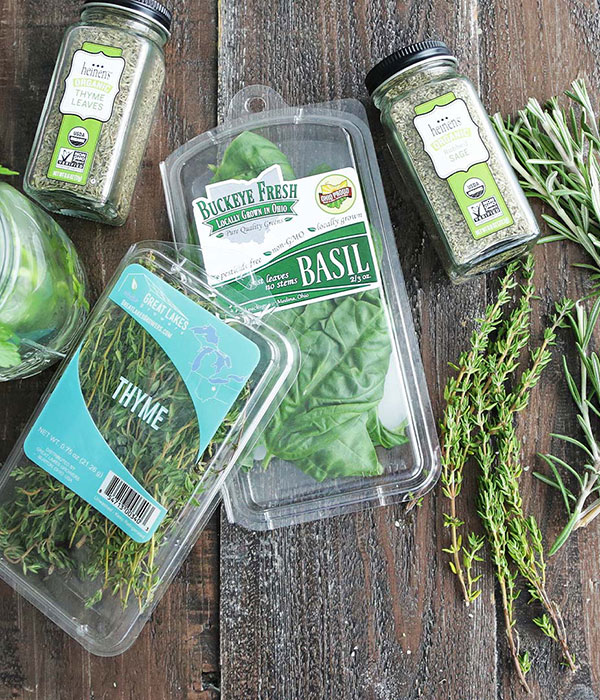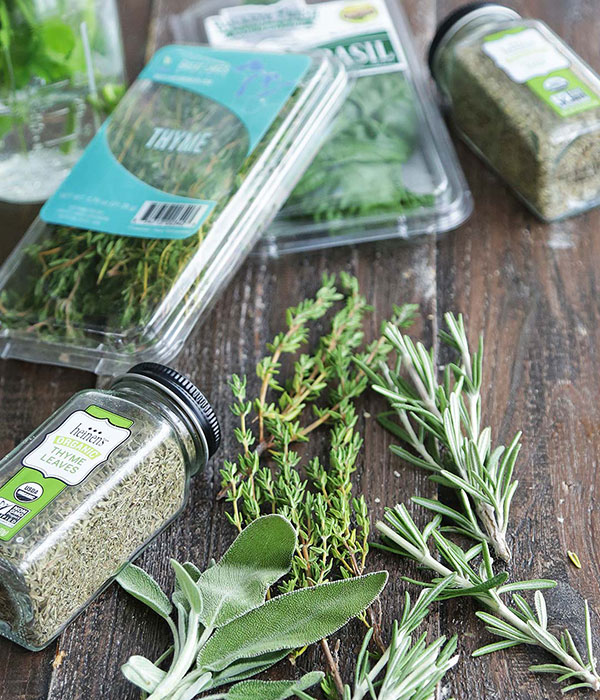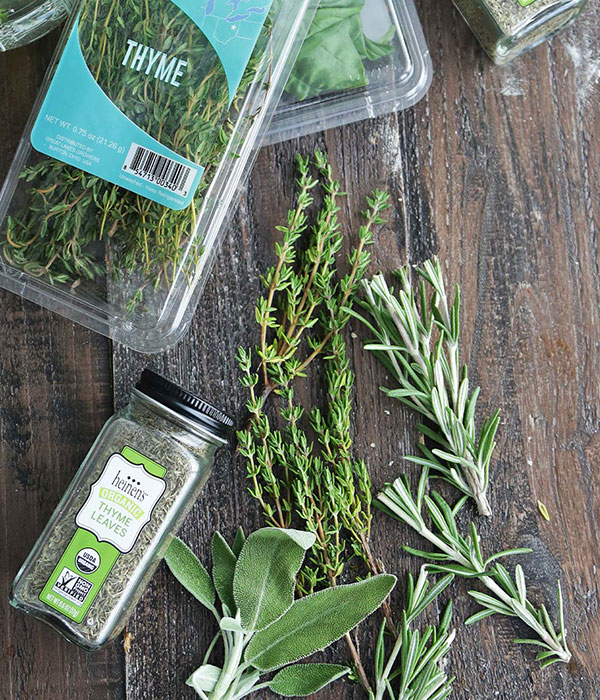Kitchen Tip: How to Prepare, Store and Use Fresh Herbs

Tips, video and photography provided by Heinen’s partner, Chef Billy Parisi.
As a chef, I love working with fresh herbs because they have the ability to amplify the flavor of virtually anything you cook!
At Heinen’s, the assortment of fresh herbs is seemingly endless and extremely affordable, so let’s walk through a few fool-proof tips and tricks for preparing, storing and using fresh herbs for your everyday kitchen adventures.
Before diving into the specifics, here are a few rules of thumb to keep in mind when cooking with fresh herbs.
- When determining how many fresh herbs to use to in relation to dry herbs, stick to 1 Tbsp. of fresh herbs for every 1 tsp. of dry herbs.
- Fresh herbs should be used for finishing dishes, whereas dry herbs should be used during the cooking process. Dry herbs need to be reconstituted and take longer to release their flavors, while fresh herbs are pungent and flavorful on their own.

How to Prepare Fresh Herbs
It’s important to rinse fresh herbs before storing. To do so, simply run them under low pressure cold water and quickly dry them using a flicking motion to remove any access water.
When it comes to storing, the process differs slightly between soft stem and hard stem herbs.
For soft stem herbs, once dry, fill a short or medium height glass with about an inch of cold water. Add the herbs so the stems are partially submerged in the water, then cover with a plastic bag and place in the refrigerator.
Soft Stem Herbs Include
- Parsley
- Cilantro
- Dill
- Basil
- Tarragon
- Mint
For hard stem herbs, once dry, place them on a damp paper towel and loosely roll them up. Put the rolled herbs in a plastic bag or airtight plastic container and chill on the bottom shelf of the refrigerator for 1-2 weeks, or longer.
Hard Stem Herbs Include
- Rosemary
- Thyme
- Oregano
- Sage
Pro Tip: If you have an abundance of fresh herbs and simply don’t know how to use them, chop them up, portion them into lidded ice cube trays with Heinen’s olive oil and freeze until ready to use. Once frozen, that will act as little flavor bombs for all kinds of dishes.

How to Cut Fresh Herbs
A highly debated topic in the foodie community is whether or not to include the stem when cutting/ chopping fresh herbs. A good rule of thumb to guide your decision is if the stem is soft, chop it because it includes so much flavor! In addition to the soft stem herbs listed above, you can also chop the stems of thyme, oregano and sage.
When it comes to cutting fresh herbs, remember that oxidation causes browning, so the more cuts you make, the faster they turn. To reduce this risk, roll the herbs tightly and give them one thin cut all the way down. If you’re planning to use the herbs right after cutting, feel free to finely mince them.
When it comes to hard stem herbs, like thyme, you can use them stem if it is tender and young and chop it the same way as soft stem herbs. If the stem is older and woody, remove the leaves from the stem and chop them separately.
Rosemary is one herb where the stem should always be discarded. To remove the leaves, simply pinch it a at the top and slide your thumb and pointer finger down the stem until the leaves have been removed. Once the leaves are removed, you can slice or mince them for use.

How to Use Fresh Herbs
One of the most asked questions around fresh herbs is, “which herbs go with which foods.” While the answer is certainly subjective depending on the flavor profiles you enjoy, here are a few recommendations for the most common proteins.
- Beef: Parsley, Cilantro, Thyme, Rosemary, Basil
- Lamb: Parsley, Thyme, Rosemary, Mint
- Chicken: Parsley, Cilantro, Thyme, Rosemary, Basil, Sage, Tarragon, Dill
- Pork: Parsley, Cilantro, Thyme, Rosemary, Sage
- Fish: Parsley, Cilantro, Thyme, Dill, Tarragon


